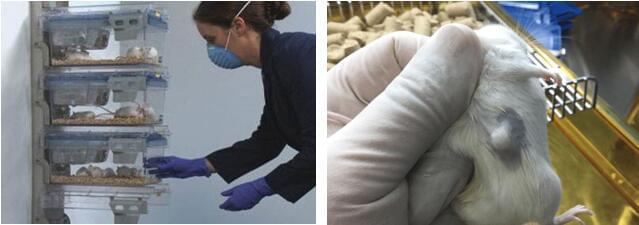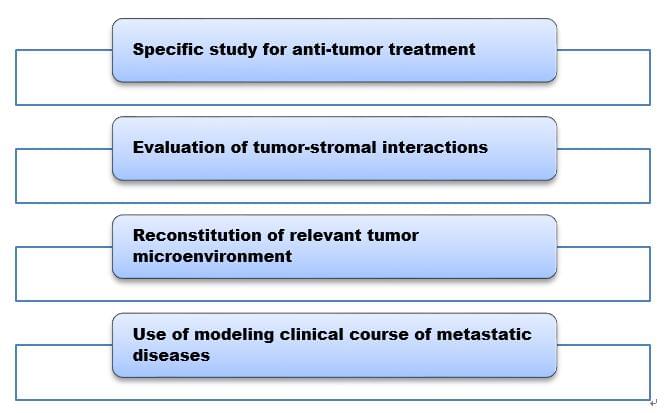Animal Tumor Models

One of the recognized deficiencies in the field of cancer research is a lack of model systems that allow investigation of the carcinogenesis and cancer therapy. To evaluate the efficacy of cancer treatments in preclinical and clinical studies, animal tumor models whereby human cell lines or patient derived tumors are transplanted into immunocompromised mice are commonly used. Animal tumor models provide a close alternative to clinical testing and allow researchers to understand the mechanisms of clinical drug action, which is critical before taking a drug candidate to clinical trials.
Creative Bioarray provides diverse animal tumor models that being research hotspots at present, which includes the following categories, but is not limited to:
Cancer cell line-based xenograft (CDX) model
Creative Bioarray maintains various human tumor cell lines that are invaluable for medical, scientific and pharmaceutical institutions. In the meantime, Creative Bioarray supplies several types of quality certificated immunodeficient mice including nude mice, severely compromised immune deficient (SCID) mice, and SCID mice with nonobese diabetic (NOD-SCID) to assisting customers to get access to exquisite animal models.
Patient-derived tumor xenograft (PDX) model
Patient-derived tumor xenografts (PDX) are based on the transfer of primary tumors directly from the patient into an immunodeficient mouse. This modeling pattern can avoid harsh chemical or mechanical injury that may sensitize cells to anoikis and thereby improve the engraftment rate from 60% up to 95%. Because PDX mice are derived from human tumors, they offer a tool for developing anticancer therapies and personalized medicine for patients with cancer. Services in Creative Bioarray are including but not limited to PDX model creation, technical support of transplantation as well as comprehensive histopathological analysis.
Humanized-xenograft model
Humanized-xenograft models are created by co-engrafting the patient tumor fragment and peripheral blood or bone marrow cells into NOD-SCID mice. The pattern allows for reconstitution of the murine immune system enabling researchers to study the interactions between tumor environments and xenogenic tumor stroma in cancer progression and metastasis.
Allograft model
Allograft models are comprised of allografts of spontaneous murine tumors derived from GEMM or carcinogen-induced models. This kind of models are never manipulated or adapted to grow in vitro, mirroring original mouse tumor histopathology and genetic profiles, with different differentiation phenotypes, rich microenvironments, and cancer stem cell driven disease.
Syngeneic tumor model
Creative Bioarray provides a number of well validated syngeneic tumor models for preclinical immunotherapy research. Syngeneic tumor models are allografts derived from immortalized mouse cancer cell lines which originated from the same inbred strain of mice. By using the models, researchers can assess new single agent and combination immunotherapies within mice with fully competent immunity.
Advantages

Creative Bioarray is dedicated to establish the most competitive service platforms for Oncology research. Our scientific staff can assist you at each single step from model selection, model construction, drug efficacy testing to the study on characterization and biomarker validation, aiming to create effective pre-clinical investigation by reasonable resource utilization as well as exquisite biomedical attainments.
Quotation and Order
If you have any special needs in establishment or application of animal tumor models, please contact us for this special service. Let us know what you need and we will accommodate you. We look forward to working with you in the future.
References
- Yuzhuo W,; Daniel S, et al. A Human Prostatic Epithelial Model of Hormonal Carcinogenesis. Cancer Res. 2001, 61: 6064-6072.
- Despina S,; Gregory JH. Patient-Derived Tumor Xenografts: Transforming Clinical Samples into Mouse Models. Cancer Res. 2013, 73(17): 5315-5319.

